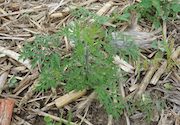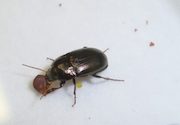| |
| |
 |
 |
| |
 |
|
July 16, 2019 |
|
| |
The Ontario government will invest $1.3 million in research to develop new solutions for field crop farmers to prevent and control crop diseases and pests, including developing approaches to combat Fusarium disease in wheat.
» Read more...
The first western bean cutworm (WBC) moth was caught in Ontario this week, a month later than usually expected. The delay in growing degree days pushed the development of the pest, but with a delayed corn season, there is a good chance peak flight will still align with pre-tassel stages in many fields.
» Read more...
The Government of Canada will invest $13 million in projects that will help to strengthen, diversify and grow Canada’s grains and oilseeds exports. Industry members emphasize the support will help Canada continue to diversify its exports amid ongoing trade tensions.
» Read more...
|
| |
 |
 |
| |
|
| |

With the spotlight on agriculture in the news, Top Crop Manager wants to share a different perspective: yours. For the duration of the season, we want to see your field views. What does being a part of Canadian agriculture look like to you?
The winner will be featured on the cover of our national December issue. Photos will be accepted until October 15, 2019.
» Learn more |
| |
|
| |
 Though glyphosate-resistant (GR) common ragweed is very localized to a handful of fields in the province, it is still important for Ontario producers to know how to handle it. Peter Sikkema led a two-year study consisting of eight field experiments to evaluate the efficacy of pre-emergence and post-emergence herbicides on controlling GR common ragweed in corn.
» Learn more
Though glyphosate-resistant (GR) common ragweed is very localized to a handful of fields in the province, it is still important for Ontario producers to know how to handle it. Peter Sikkema led a two-year study consisting of eight field experiments to evaluate the efficacy of pre-emergence and post-emergence herbicides on controlling GR common ragweed in corn.
» Learn more |
| |
 Studies have shown that weed seed predators can be responsible for up to 90 per cent of all seed losses of a particular weed species. Researchers out of the University of Saskatchewan are looking into what makes these predators tick and how growers can improve the living conditions so predator populations can thrive.
» Learn more
Studies have shown that weed seed predators can be responsible for up to 90 per cent of all seed losses of a particular weed species. Researchers out of the University of Saskatchewan are looking into what makes these predators tick and how growers can improve the living conditions so predator populations can thrive.
» Learn more |
| |
|
| |
|
|
| |
| |







